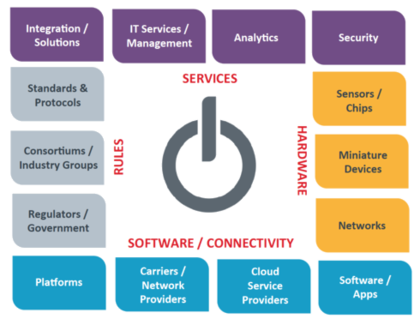HoweverIntegration of persona-based applications meant to support workers in critical positions is one of the more promising and evolving features of the industrial internet of things. IoT technology can identify qualities and behaviors that are unique to a composite of an individual. This form of modeling offers unique data collection opportunities for employers and industry to better understand their employees’ and targeted consumers’ wants and needs.
Read this blog to understand how IoT can humanize, and how you can choose the right IoT development services to integrate more personal models to better cater to your end-user.
Assigning the right skillsets to the right departments
Persona-based IoT gathers essential data from many industrial sectors and provides KPIs and actionable information on how everyone participating in the processes may operate more efficiently.
When combined with resources, training, and communication platforms, these measures help to ensure that productivity and employee satisfaction are at the forefront of operational execution.
However, to ensure this kind of solution is in practice and works efficiently, IoT development expertise through experienced IoT service providers becomes crucial. Only expert IoT development services can ensure that the best custom applications can make which can focus on all parameters which are exclusive to your organization.
IoT goes beyond screens and sensors – Wearables are crucial
Wearable technology improves the individual experience while collectively boosting efficiency by monitoring data such as worker position and ambient noise levels. Safety equipment like hardhats will never replace by software design to monitor worker safety conditions. But they will be augmented using sensors and other data capturing technology for safety.
IoT development services are increasingly building custom solutions to boost safety in the industrial space with the use of such technologies.
The Human Machine Interface
IoT technology has allowed previously unthinkable human engagement to become a feature of the industry, previously restricted to a distinct, machine-only part of many manufacturing floors. Human-machine interface (HMU) devices enable humans to communicate with machines. HMU assures that collaboration between man and machine is increasing productivity by being involved in everything from the monitoring and control of autonomous machinery to drone-like deployment in distant locations accessible only by equipment.
Intelligent Devices
Sensors are crucial in the Internet of Things, as they transform ordinary objects into real-time data capturing devices. Such technology is growing in the startup sector, thanks to the abundance of materials in recent times. Our capacity to develop valuable sensors at an economical price point will only improve as the cost of hardware continues to fall. We’ll see the actual potential of these sensors as time elapses.
To make full use of this unfolding potential, the software solutions in place will continue to grow in complexity and require a fair degree of customization. IoT development services providers will be able to meet these growing requirements and realize the full potential of humanized IoT.
Increasing Automation Use Cases
As automation becomes more sophisticated, our position alongside them will shift, as eliminating humans from the equation improves speed and efficiency while lowering human error. To make this a success for organizations, IoT solutions need to augment with data analytics and other machine learning solutions.
To monetize such complex end-to-end solutions for businesses, it is very important to leverage the expertise of a technology partner that can understand your business needs and craft the correct IoT solution embedded with the correct automation capabilities.
Putting the Customer First
To make IoT work for businesses, companies must put themselves in the shoes of customers who use the assets in their ecosystem to create business value across the stakeholder ecosystem, whether those assets are on their own shop floors, partner assets, or end-customer assets, as well as social streams. This will help in the evolution of IoT dialogues from commodity conversations about sensors, gateways, IT, and communications to business value discussions.
To make such an idea useful, it becomes crucial to understand IoT use cases through business experience and expertise. It becomes increasingly difficult to bridge the gap between the customer and technology solutions unless you have an expert team at hand which can guide you through the pros and cons of solutions, and validates your idea while considering infrastructure and monetary restrictions.
If you are looking to integrate a humanized IoT solution that is compatible with your organization’s established internal practices, reach out to Pratiti Technologies. Pratiti Technologies has been helping organizations develop custom IoT ecosystems to digitize their business practices in multiple industry verticals such as manufacturing and healthcare. Unlike pure software solutions, IoT solutions require the understanding of a business ecosystem. To implement a feasible solution that is compatible with your business practices and ecosystem, reach out to us to drive value, and realize monetary benefits through a custom IoT solution.
